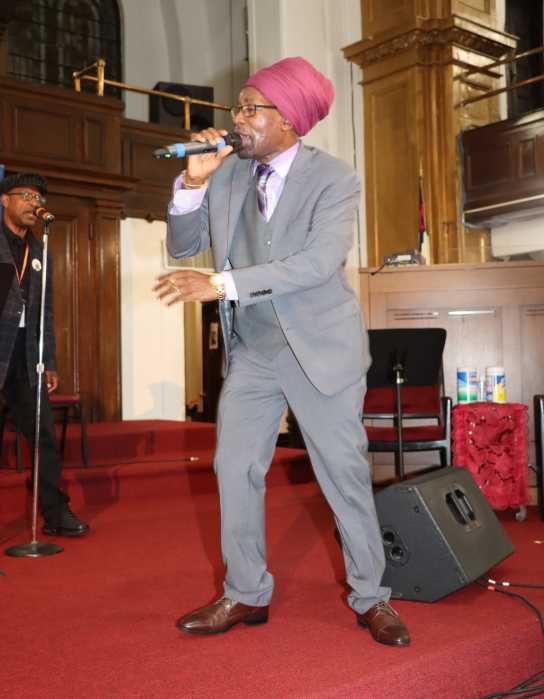Shakespearean comedy and Tudor drama at the opera
Kudos to Lesley Koenig, Opera Boston’s new general director, for scheduling the nerviest season in North America — “Beatrice et Benedict,” “The Midsummer Marriage, “and Bellini’s “I Capuleti ed i Montecchi.” Fortunately, the company’s audience craves and appreciates novelty.
Berlioz’s odd Shakespearean comedy, in a spirited bilingual production by David Kneuss (designed by Robert Perdziola in post-World War II garb), received a warm welcome October 21. The beauties of the women’s music in this score are breathtaking, and Gil Rose led a performance alert to both comic caprice and yearning lyricism.
The piece has a distinguished Boston history — Kneuss semi-staged it for the Symphony, under Ozawa, in 1984 with Frederica von Stade and Gwendolyn Killebrew alternating opposite Stuart Burrows and Jon Garrison. Four years later, Garrison returned to confront Boston Lyric Opera’s mettlesome Beatrice, Lorraine Hunt.
At the Broadway-scaled Cutler Majestic Theatre, vocal honors went — as they often do in this work — to Hero (the graceful Heather Buck) and Ursule (strikingly timbred Kelley O’Connor). Both leads made company debuts. Julie Boulianne’s winsome Beatrice offered native sung French and some charm; after one act of bothersome tremolo, she exhibited more pleasing sound and dynamic variety in her solo scene. Sean Panikkar gave Benedict height and youth and little more. He lacked Gallic float, Gallic vowels, and rhythmic phrasing. A penetrating, cutting sound, his tenor seems more destined for Narraboth (which he sings), perhaps Froh and Erik. Veteran baritone Robert Honeysucker brought distinction to Don Pedro.
The next night I was privileged to hear the excellent Boston Baroque tackle “Die Schoepfung” (“The Creation”) at New England Conservatory’s intimate Jordan Hall. Martin Pearlman’s highly disciplined, sonorous forces were preparing to record Haydn’s masterly oratorio for Glasgow-based Linn Records (its first American contract).
Haydn’s incredibly rich and forward-looking score — written when he was 65 — stands high on my list of Great Vocal Music Everyone Should Know But Doesn’t — alongside “Guillaume Tell,” “L’enfance du Christ,” “Simon Boccanegra,” and Rachmaninoff’s “Liturgy of St. John Chrysostom.” With its mix of playfulness and profundity, Haydn’s astonishingly moving yet entertaining late work seems the prime link between “The Magic Flute” and Beethoven’s “Fidelio” and Ninth Symphony. The harmonic germ of “Tristan und Isolde” can be heard in its opening pages, which depict the pre-Creation chaos by means of melancholy phrases unresolved by cadences.
Springwater-toned Amanda Forsythe — who looked to be about eight-and-a-half months pregnant and understandably ventured a few extra breaths in long runs — sang with gorgeous ease and purity of tone plus terrific trills. The wonderful bass-baritone Kevin Deas (one of America’s most inexplicably undervalued singers) offered superb vocalism, alert to musical and verbal nuance and with a full, subtly deployed range of dynamics rare in his voice category. Tenor Keith Jameson also brought charm and shine to Uriel’s somewhat lesser opportunities. (With a little polish of German, he should prove an outstanding Bach Evangelist.) All three soloists showed excellent musicianship.
The chorus sang with precision and art. The few passing blemishes (baroque hornists have a hard life) should vanish in studio conditions. The forthcoming CDs should be well worth investigating. Why can’t New York sustain an organization devoted to Historically Informed Practice on the order of Boston Baroque?
Rising young soprano Angela Meade assumed the title role in the Met’s “Anna Bolena” staging — designed around the very different looks and persona of Anna Netrebko — for three performances. Heard October 24, Meade commanded great respect for a genuinely beautifully vocalized performance, with lovely pianissimi, clean attacks, consistent sound, and mastery of technical demands that Netrebko could not meet— like the finale’s ascending trills.
Meade sang with some feeling, particularly in the two slow movements of the final scene. What she as yet lacks is a vital star presence either vocally or physically. Her performance was intelligently brought off but not quite lived-in as was the wounded, angry queen of Netrebko, a real stage animal, whose voice — whatever its remaining technical shortcomings — has an individual “print.”
Neither soprano quite supplied the requisite “parola scenica” — the expressive match of words to vocal lines that divas like Callas, Scotto, Sills, and Miricioiu used to bring this music fully alive — but if you combined Netrebko and Meade’s strengths, you might have today’s ideal Bolena. Meanwhile, Meade deserves praise and encouragement, and her singing provides some extraordinary beauty.
As before, the most fully satisfying member of the Met’s cast was mezzo Tamara Mumford as the page Smeton.
David Shengold (shengold@yahoo.com) writes about opera for many venues.





























